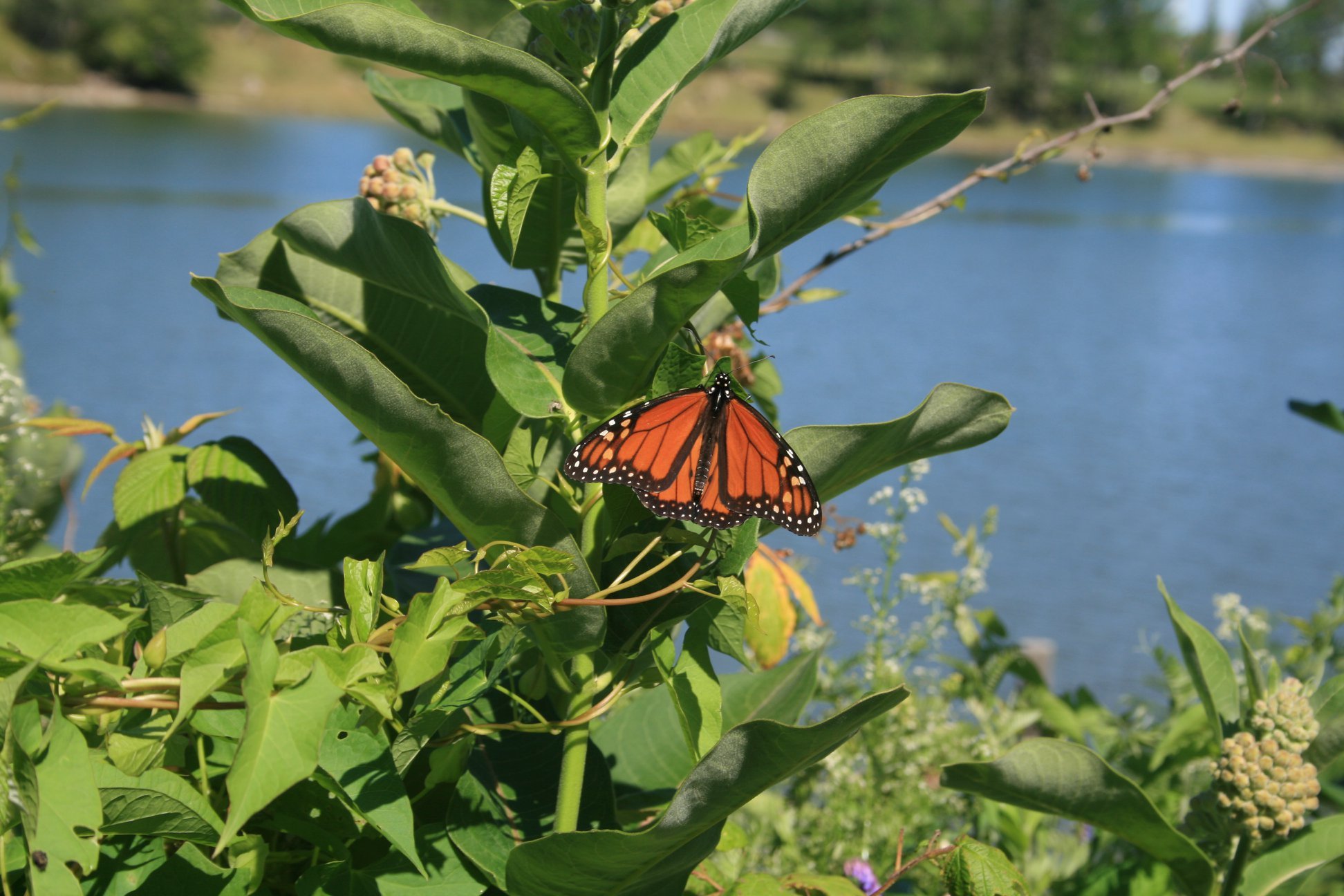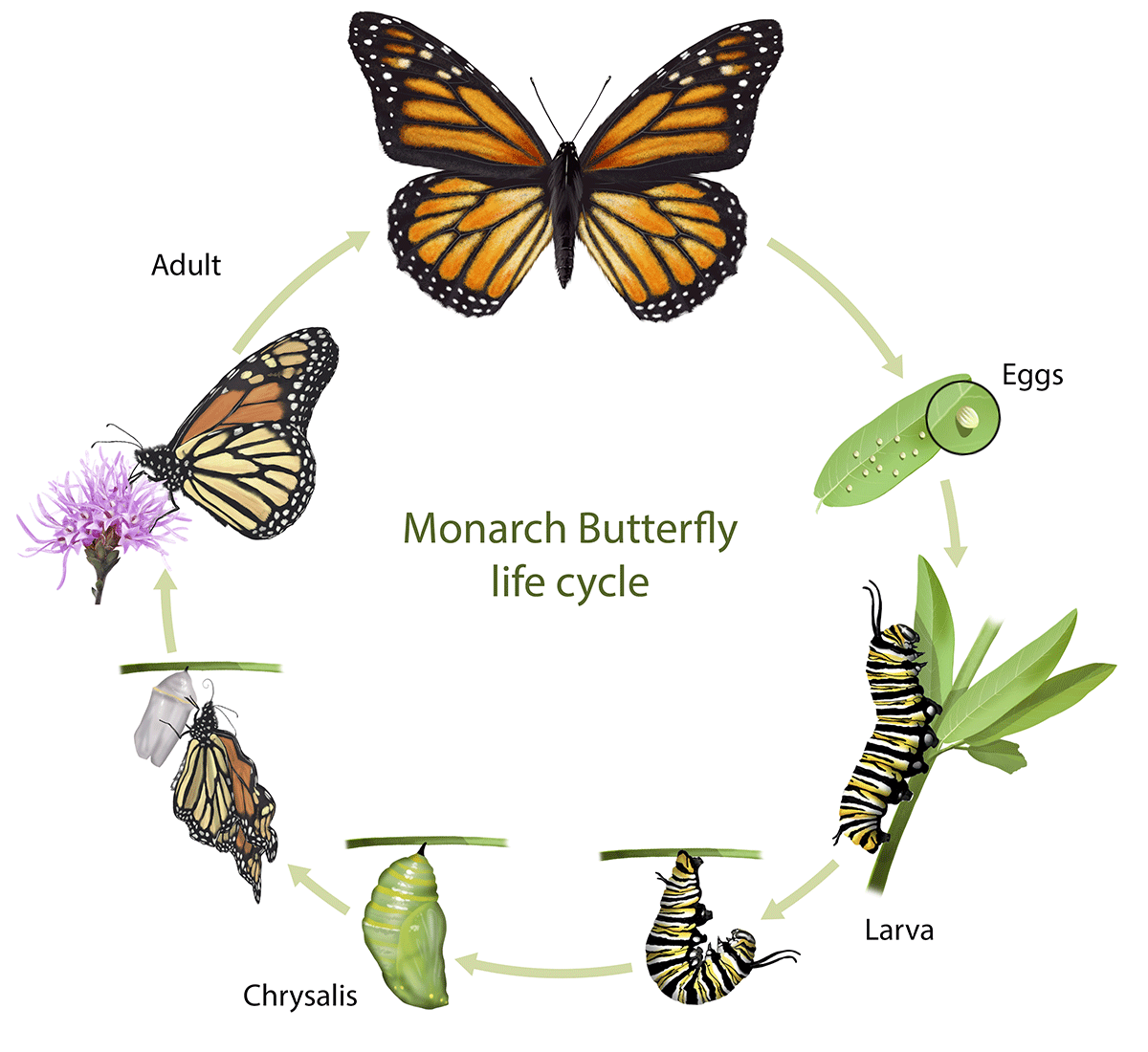
Metamorphosis
Life Cycle of a Butterfly
Butterflies have a “complete” life cycle which includes four stages. Each stage looks completely different and serves a different purpose in the development of the insect. This is called metamorphosis.
Stage 1: The Egg After butterflies mate, the female lays eggs on or under the leaves or stems of the host plant (intended food) for the caterpillars which will hatch from the eggs. Some butterflies lay their eggs singly, others lay them in clusters. Depending on the species, adults can lay eggs several times each season.
The egg is a tiny round or oval shape. Sometimes they have ribs or other markings. Generally, only 2 out of 100 butterfly eggs will survive to adulthood. Spiders, wasps, and parasitic flies are their primary predators, and some eggs will also be eaten by birds and reptiles.
Stage 2: Caterpillar (larva) After the caterpillar (larva) hatches from the egg, it will spend several weeks eating and growing. Look for them on or near the well-eaten leaves of the host plant. Depending on the species, a caterpillar may be smooth, hairy, or spiny, be a solid color, or have stripes or a colorful pattern on its body. As it grows, the caterpillar will molt or shed its exoskeleton numerous times.
Stage 3: Chrysalis (pupa) After a few weeks of eating, molting and growing, the caterpillar will select a protected area to make its chrysalis (similar to a cocoon) and will spin a thread to attach itself to a leaf or branch. The change into a chrysalis takes only a few minutes.
The chrysalis (or pupa) is the final stage of metamorphosis whereby the caterpillar’s tissues are dissolved and reformed into the adult insect’s organs, limbs, and wings. The chrysalis of most species is brown or green, which provides excellent camouflage. Some butterfly species spend all winter in their chrysalides before they emerge in the spring. Other pupate only a few weeks during warmer months before emerging to begin the cycle of metamorphosis again. View video of Monarch going from “J-mode to Chrysalis.
Stage 4: Butterfly The adult (or imago) is a butterfly. It is the reproductive and mobile stage for the species. The adults will go through courtship, mating, and egg-laying. The adult butterfly migrates or colonizes new habitats. Many butterfly species migrate northward during the Spring and early Summer, feeding on freshly sprouted larval plants.
Did You Know?
🦋 How many kinds of butterflies are there?
There are approximately 20,000 species of butterflies in the world. About 725 species occur in North American north of Mexico, with about 575 of these occurring regularly in the continental United States. About 275 butterfly species occur in Canada and some 2000 occur in Mexico.
🦋 How long does a butterfly live?
Most butterflies live only a few weeks. Smaller butterflies may live only a week while large butterflies like Monarchs, Mourning Cloaks, and tropical heliconians can live up to nine months. Butterflies are very fragile and face numerous hazards including predators, inclement weather, and pesticide poisoning.
🦋 Where do butterflies go at the night or when the weather is bad?
At night, or during bad weather, they hide under leaves, crawl under rocks, or hold their wings tightly together while hunkering down wherever they can find cover. Butterflies are very fragile and sometimes do not survive severe weather.

